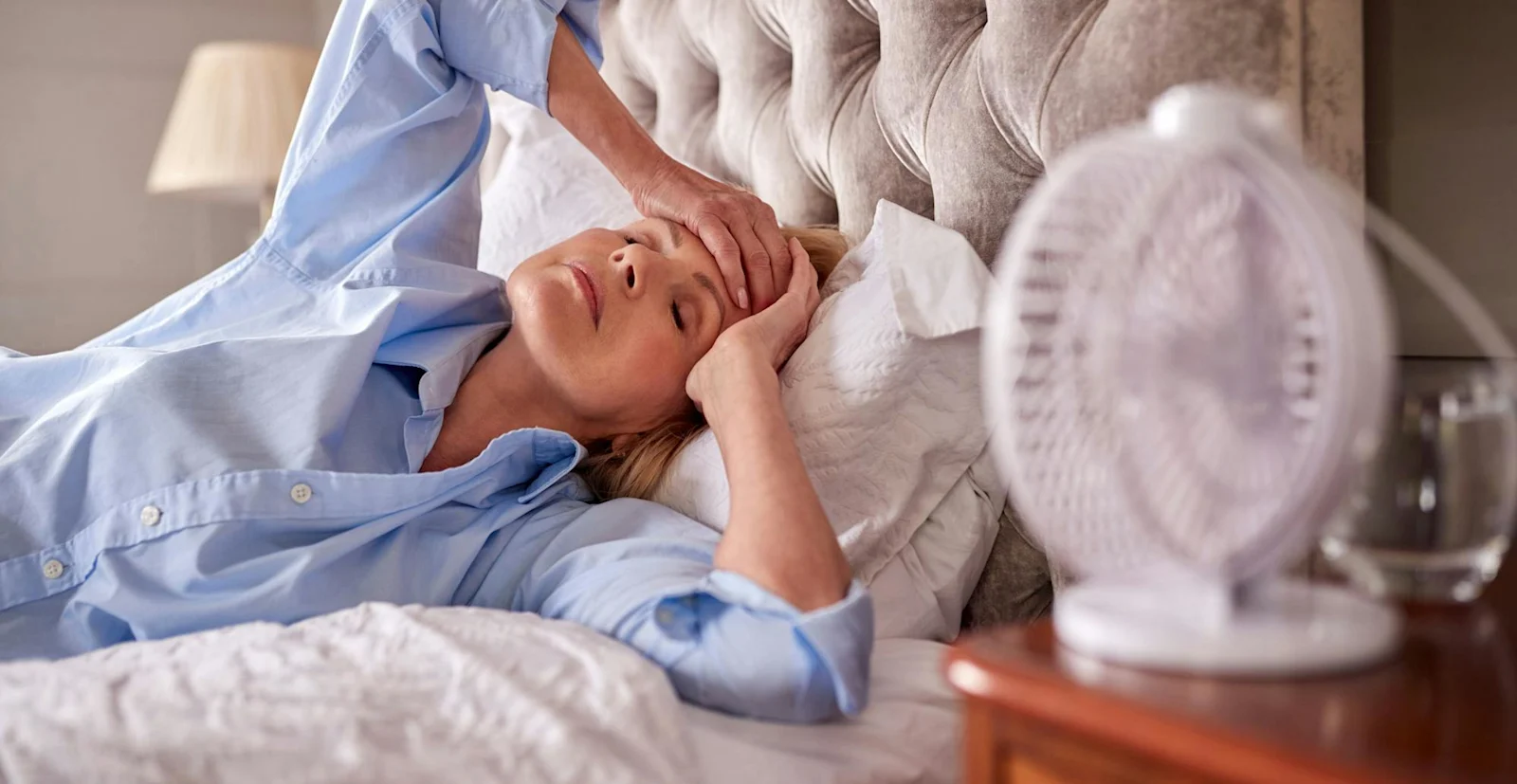Hot flashes are one of the most common symptoms of menopause, affecting up to 75% of women.(1) While some women may experience hot flashes randomly, others may have specific triggers that make them occur more frequently.
It’s important to understand what might trigger hot flashes to reduce their frequency and even prevent them from happening. This article explores some common triggers and offers strategies to help women manage hot flashes for a smoother transition through menopause.
Why do hot flashes occur during menopause?
As women approach menopause, their ovaries may become less efficient. Since the ovaries are the primary source of estrogen and progesterone, this decline in function leads to reduced hormone production.
Decreasing hormone levels affect the hypothalamus, the part of the brain responsible for regulating body temperature. This effect on the hypothalamus can cause blood vessels to expand, increasing blood flow to the skin. These changes can cause a sudden sensation of intense heat, known as a hot flash, usually followed by heavy sweating as the body tries to cool down.
Hot flashes typically begin with a warm sensation in the chest, shoulders, arms, neck, and face. They may be accompanied by a red, splotchy appearance on the skin in the affected areas. Sweating is common, and the heart rate often increases during a hot flash.
As a hot flash concludes, many women experience chills. On average, hot flashes last for a minute or two, but they can persist for up to 10 minutes in some women. Even though there’s a sensation of heat, body temperature does not generally rise above normal in most women.(2)

7 Common Triggers for Hot Flashes
Hot flash triggers can be unique to each individual. Some women may find it helpful to keep a journal to track their hot flashes and potential triggers. Journaling can help identify patterns and conditions that are associated with or cause these episodes.
Some common triggers include the following:
1. Caffeine
While the link between caffeine and hot flashes is not fully understood, studies suggest that women who consume caffeine may experience more severe hot flashes compared to those who don’t.(3)
For women whose hot flashes are particularly severe, it might help to cut back on or gradually eliminate caffeine.
2. Alcohol
The effect of alcohol on hot flashes can differ for everyone. It might trigger hot flashes in some women, while for others, it may provide some relief. If alcohol seems to worsen the severity or increase the frequency of hot flashes, it’s best to avoid it.
Experts recommend consuming alcohol in moderation, which is no more than two drinks per day.(4)
3. Spicy Food
Studies reveal that spicy food might affect the ability of the hypothalamus to regulate body temperature, potentially worsening menopausal hot flashes.(5)
Keeping a food journal may help identify which spicy foods trigger hot flashes, allowing women to avoid or limit these foods to better manage their symptoms.
4. Hot Temperatures
Hot temperatures, whether due to warm weather or dressing too warmly for the current conditions, can increase the likelihood of hot flashes.(2)
One strategy to reduce hot flashes is to dress in layers. This makes it convenient to adjust clothing to the changing weather conditions to avoid overheating. Another effective way to prevent overheating is to keep the room temperature cool with a fan or air conditioner.
5. Stress and Anxiety
Stress and anxiety can increase certain hormones, such as norepinephrine and serotonin, which may make it harder for the body to manage temperature changes during menopause.
Managing stress through practices like mindful meditation and focused breathing may help reduce hot flashes.(6)
6. Smoking
The risk of hot flashes is higher in individuals who smoke compared to those who have never smoked. The anti-estrogen properties of nicotine in cigarettes might be responsible for this increased risk. Managing hot flashes is one of many reasons to quit smoking.(7)
7. Obesity
Obesity is linked to more persistent or severe hot flashes in some women. Studies indicate that the severity and frequency of hot flashes increase with weight. Even a 10% decrease in weight may significantly reduce the risk of hot flashes.(8)
Experts recommend getting 30 minutes of moderate-intensity exercise at least five days a week to maintain a healthy weight. Useful exercises include brisk walking, swimming, jogging, and cycling.
How to Prevent Hot Flashes with Hormone Replacement Therapy (HRT)
Systemic estrogen is the most effective treatment for managing and preventing hot flashes during menopause, potentially reducing their frequency by up to 75%.(2) For women with a uterus, adding progesterone is advised to prevent the risk of endometrial hyperplasia.
HRT is available in various forms, including pills, patches, creams, and gels, each offering different doses and combinations of estrogen and/or progesterone.
It's important to note that not all hormone therapies are alike. Bioidentical HRT uses hormones with molecular structures identical to those produced naturally by the ovaries. This makes bioidentical hormones more tolerable compared to synthetic alternatives.
However, it's best to consult a physician to determine whether HRT is safe and suitable. Women experiencing recurrent or severe hot flashes should seek medical advice to better manage symptoms and improve quality of life during the menopausal transition.
